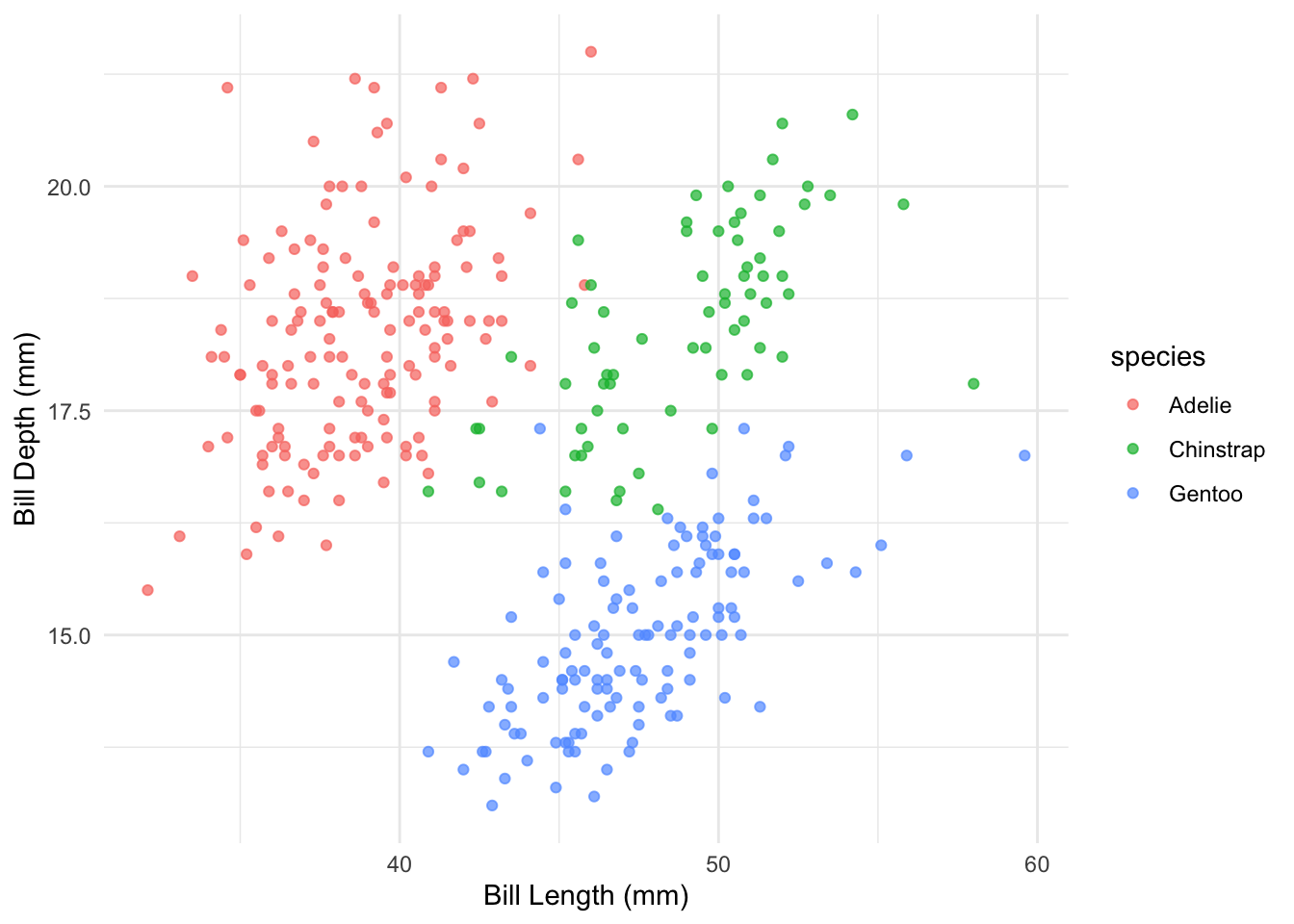library(tidyverse)
library(palmerpenguins)
ggplot(penguins, aes(x = bill_length_mm, y = bill_depth_mm, color = species)) +
geom_point(alpha = 0.7) +
theme_minimal() +
labs(x = "Bill Length (mm)", y = "Bill Depth (mm)")
Academic publishing requires precision, consistency, and proper attribution. Quarto excels in these areas by providing:
For academic documents, your YAML header often needs more details:
---
title: "Analysis of Penguin Morphology in the Antarctic Region"
author:
- name: "Your Name"
affiliation: "Your University"
email: "your.email@university.edu"
orcid: "0000-1234-5678-9101"
- name: "Co-Author Name"
affiliation: "Their University"
format:
pdf:
documentclass: article
classoption: [11pt]
toc: true
number-sections: true
cite-method: biblatex
bibliography: references.bib
csl: apa.csl
abstract: |
This is the abstract of your paper. It should be concise and explain the main
findings of your work in about 150-250 words.
keywords: [keyword1, keyword2, keyword3]
---Importantly, to render as pdf, you need to install tinytex package. It is a small package that allows you to compile LaTeX documents using Quarto. You can install it by running tinytex::install_tinytex().
An alternative choice to render pdf is to use typst instead of pdf. typst is a modern alternative to LaTeX that provides a more flexible and user-friendly way. It is already included in Quarto and does not require any additional installation.
This header provides complete metadata for academic publishing, including proper author information, citation style, and document formatting.
The first step is to link your bibliography file in the YAML header:
bibliography: references.bib
csl: journal-of-ecology.cslbibliography: Points to your BibTeX or CSL JSON filecsl: (Optional) Specifies the Citation Style Language fileYour BibTeX file contains all your references in a structured format. Here’s a sample:
@article{smith2023,
author = {Smith, John and Johnson, Sarah},
title = {Analysis of Antarctic Penguin Species Distribution},
journal = {Journal of Antarctic Biology},
volume = {45},
number = {2},
pages = {112-128},
year = {2023},
doi = {10.1234/jab.2023.45.2.112}
}
@book{wilson2020,
author = {Wilson, Maria},
title = {Ecological Methodologies in Polar Regions},
publisher = {Cambridge Academic Press},
year = {2020},
isbn = {978-3-16-148410-0}
}Once your bibliography is set up, citing sources is straightforward:
According to @smith2023, penguin populations have declined in recent years.
Multiple studies [@smith2023; @wilson2020] have documented this trend.
As Wilson noted [-@wilson2020], methodology is critical in polar research.These render as:
“According to Smith and Johnson (2023), penguin populations have declined in recent years.”
“Multiple studies (Smith and Johnson, 2023; Wilson, 2020) have documented this trend.”
“As Wilson noted (2020), methodology is critical in polar research.”
Academic papers often require complex mathematical notation. Quarto uses LaTeX syntax for equations:
For inline equations, use single dollar signs:
The probability is given by $P(X > x) = \int_x^{\infty} f(t) \, dt$For standalone equations, use double dollar signs:
$$
\begin{align}
\frac{\partial f}{\partial x} = \lim_{h \to 0} \frac{f(x + h) - f(x)}{h}
\end{align}
$$Cross-references help readers navigate your document. Quarto makes this simple with labels and references:
library(tidyverse)
library(palmerpenguins)
ggplot(penguins, aes(x = bill_length_mm, y = bill_depth_mm, color = species)) +
geom_point(alpha = 0.7) +
theme_minimal() +
labs(x = "Bill Length (mm)", y = "Bill Depth (mm)")
You can then reference this figure: “As shown in Figure 23.1, the bill dimensions clearly differentiate species.”
You can reference sections using their headers:
## Data Collection Methodology {#sec-methodology}
... content ...
As described in @sec-methodology, our approach controls for seasonal variation.For numbered equations you can reference later:
$$
\begin{align}
E = mc^2 \tag{1}\label{eq-einstein}
\end{align}
$$
As shown in Equation @eq-einstein, energy and mass are equivalent.